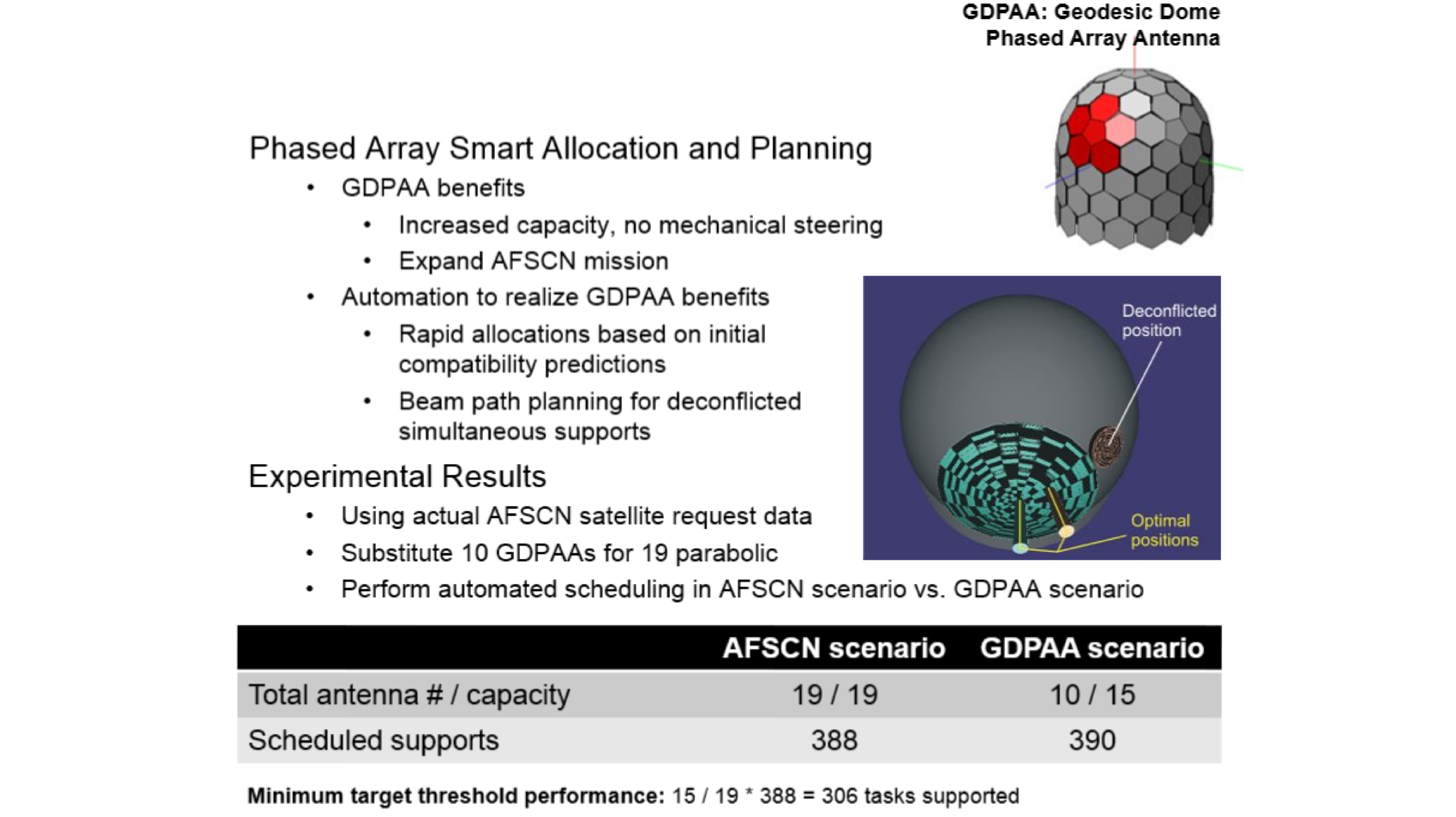PASAP
Optimization of Communication Networks with Geodesic Dome Phased Array Antennas using Artificial Intelligence Techniques
Stottler Henke’s Phased Array Smart Allocation and Planning (PASAP) tool applies artificial intelligence techniques to two distinct, yet interrelated problems with planning Geodesic Dome Phased Array Antenna (GDPAA) contacts. First, PASAP comes equipped with a smart beam allocation algorithm, which is responsible for the task of allocating beams to transmit/receive modules on the antenna without overloading. Moreover, PASAP features a beam path planning algorithm. This path planning algorithm was originally developed for the U.S. Army to enable UAVs and piloted rotary wing aircraft to more capably avoid threats and obstacles; for PASAP, we modified this algorithm to meet the challenge of better beam path planning — demonstrating the flexibility of Stottler Henke’s algorithms and how we often customize the same basic algorithms or software systems to address a diversity of customers and their unique needs.
Given an allocation of beams to transmit/receive on the antenna, a path across the topography of a geodesic dome antenna surface must be established that preserves the assignments without overloading or violating communication constraints. Although the PASAP tool was developed with the specific constraints of existing GDPAA designs in mind, it is intentionally abstract in order to apply for a broader range of potential constraint satisfaction problems with different kinds of phased arrays. The initial GDPAA application was designed to contribute to the overall feasibility of GDPAA utilization by demonstrating an automated means of optimizing the increased capacity that comes with such a platform, which holds the potential to not only reduce the manpower requirements for the scheduling activity, but also to contribute to greater overall satellite communication capacity.
